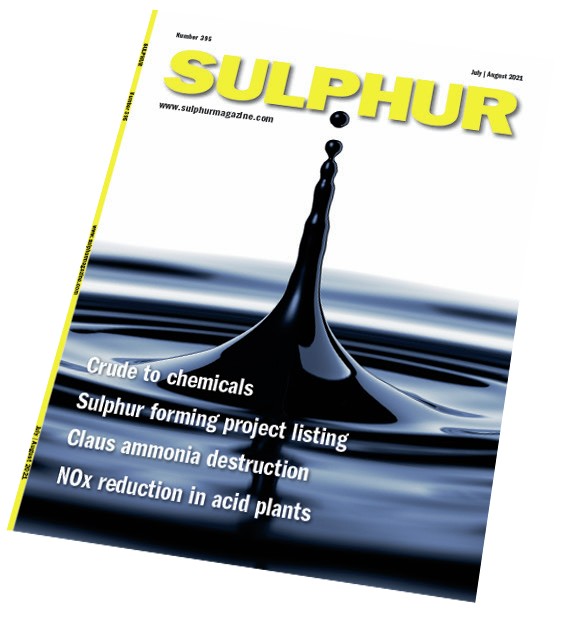Sulphur 395 Jul-Aug 2021

31 July 2021
Back on the rollercoaster

“This year’s price rises… have been especially eye-catching”
Commodity markets are often volatile, and sulphur and sulphuric acid can be more so than most, with much of their supply coming from involuntary production, and sulphur supply in particular often dependent on the timing of large scale oil and gas projects. Even so, this year’s price rises, in some cases tripling in just over a year, have been especially eye-catching.
The continuing delay to Qatar’s Barzan LNG project and a slower than expected start-up for Kuwait’s new refineries have helped keep supply tight at the same time that phosphate consumption seems to be strong, and the threat of Chinese export restrictions is keeping phosphate markets nervous. Chinese sulphur imports have been higher than expected, keeping an already tight market tighter still. On the acid side, high sulphur prices discourage sulphur burning acid production, and strikes and shutdowns in Chile and Canada have helped balance new Chinese smelter acid production. And covid continues to impact upon demand for refined fuels and hence refinery run rates, reducing sulphur availability from that segment of the market.
And then there is the start-up of the PT Halmahera Persada Lygend high pressure acid leach (HPAL) plant in Indonesia, which will add up to 300,000 t/a of sulphur demand for nickel production at capacity – whenever that is reached. Although this is no bigger than some of the new phosphate projects that are starting up, it is a sign of one of the major changes that may be happening in sulphur and sulphuric acid markets. It is only the first of several new HPAL plants that are under construction in Indonesia and Australia to feed new nickel sulphate demand for battery production, predominantly in China. The China nickel story used to be based around stainless steel demand, and that encouraged the first wave of HPAL plants in the 1990s and 2000s, part of a wave of acid leaching that swept copper and uranium as well as nickel markets, and added 20 million t/a and more to acid demand. However, on the nickel side they were eventually undercut by nickel pig iron (NPI) production using cheap Indonesian ore, as well as suffering a plethora of technical issues. Now, though, there is something of a perfect storm created by Indonesia’s ban on nickel ore export, a shortage of nickel sulphide deposits encouraging a focus on oxide-based laterite ores, and a rapidly growing need for purer, Class 1 nickel that laterites can find hard to supply, which is driving a huge new concentration of Chinese-funded HPAL projects in Indonesia. Lygend is only the first, and acid demand for nickel production could again rise by several million t/a over the next decade. Indeed, Indonesia’s nickel production, which has risen from 24,000 t/a to 636,000 t/a in just five years, turning it into the world’s second largest nickel producer (after China), is projected to become the world’s largest nickel producer this year, and likely to become dominant in international nickel markets. With smelter acid in fairly short supply, most of the acid requirement for Indonesia is likely to come from sulphur burning acid plants.
This is all for the longer term, however. In the meantime, the global vaccination programme offers the hope that fuels demand will continue to recover, and with it sulphur supply. There are strong signs that this is already happening, and it should eventually feed into sulphur availability and hence prices – especially if one of the Middle East mega-projects also finally starts ramping up. For the time being we seem to be at the top of the rollercoaster, and as we all know, there’s only one way to go from there.






